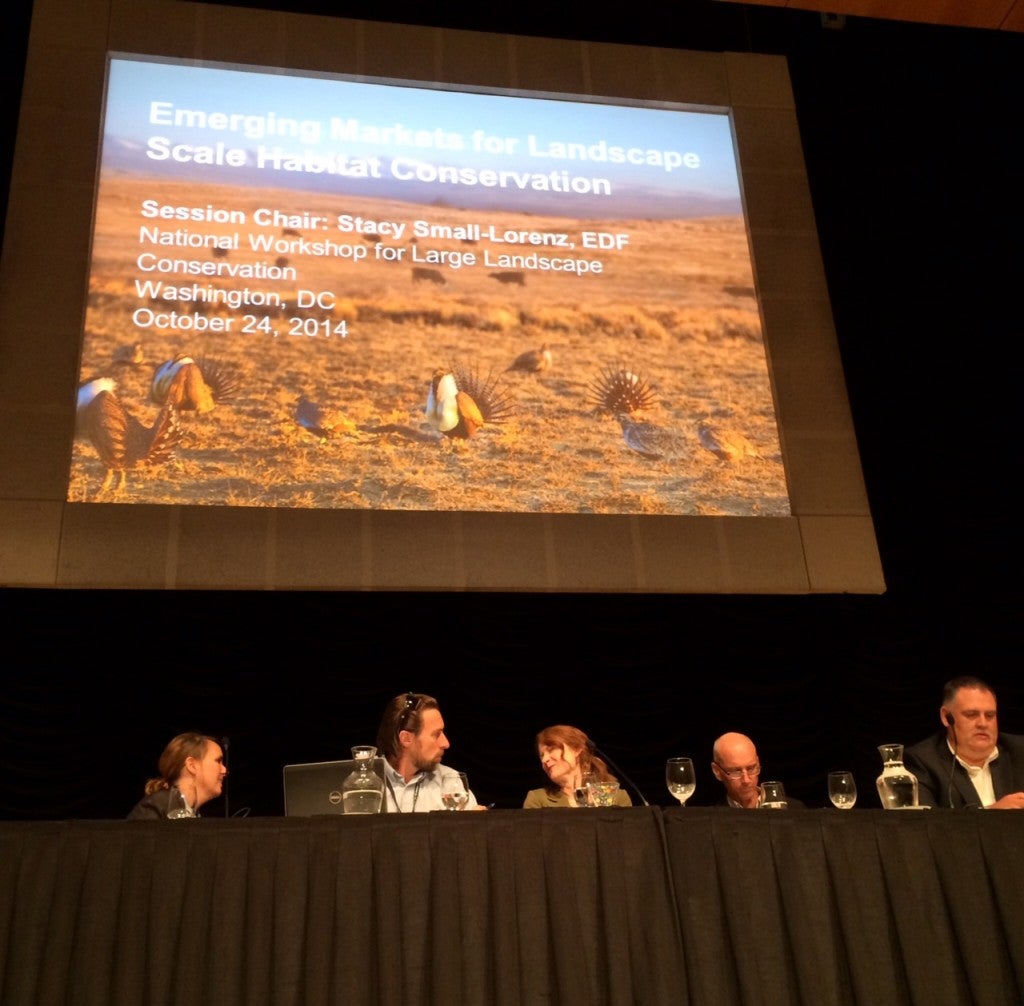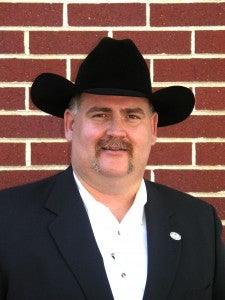Terry Fankhauser is a rancher and executive vice president of the Colorado Cattlemen’s Association. He is also a board member and executive director of Partners for Western Conservation, which seeks to implement market-based conservation services that benefit wildlife and the economy.
Terry joined me and other conservation colleagues last week in Washington, D.C., to discuss habitat exchanges at the National Workshop on Large Landscape Conservation. I asked him to give us a recap of the discussion and to tell us why he got involved in the development of exchanges.
Why were you in D.C. last week?
I took the opportunity to travel to Washington to convey the message that agriculture producers are investing time and resources into developing conservation markets like the Colorado Habitat Exchange. We are just as interested as other parties in addressing conservation concerns, regulatory challenges and the ongoing need for viable businesses that drive our economies.
What do habitat markets have to do with Colorado cattlemen?
Our members and beef producers throughout this country realize that current approaches are not being successful in addressing our biggest natural resource challenges, such as species listings and soil health. At the same time, there is a real desire for significant increases in conservation implementation and incentives, assurances and outcome-based actions.
Research has shown that society can better avoid significant costs with upfront actions, rather than reactive regulations. The very foundation of conservation through agriculture lies within this flexible implementation of conservation practices. Our members are asking for new tools and this approach shows great promise.
Why is this so important to you?

Fankhauser (right) joins panelists from Environmental Defense Fund, Ecometrix Solutions Group and the U.S. Fish and Wildlife Service at the National Workshop on Large Landscape Conservation in Washington, D.C.
Developing robust conservation markets is important to me because it’s important to the longevity of the beef industry. It’s important to my parents, my children and the members of the Colorado Cattlemen’s Association. Everyone sees the opportunity; they realize that species like the greater sage-grouse can thrive as a managed component of a successful beef cattle ranch.
Habitat exchanges go the distance by assuring our industry’s future and honoring our past.
Why should other landowners in Colorado and across the West care about habitat conservation?
The question really should be why landowners and society at-large should care. In reality, it appears as a paradox! But it’s not. We should all care about how we conserve our natural resources. More rigid approaches – such as litigious action and regulations – do not enhance conservation of our natural resources. If landowners are not meaningfully engaged in conservation that works for the environment and the landowner, the result will be less available habitat and lower quality habitat for species. That’s not good for anyone.
You see in the end, private lands are the key. They make up the majority of the geography and the critical wildlife habitats in this country. We should all be invested in assuring the long-term sustainability of our private lands, both for the economy and the environment.
What is your personal experience with conservation?
My family has holistically managed our Flint Hill ranching operations in Kansas for generations. I see the value of decisions that have been in the past and those being made now that go beyond the cattle we raise to impact the resources we depend on for our livelihood. At the same time, landowners can enhance their employment of technology and data-driven decision making at a higher level related to resource management to yield greater results.
Through my work with Colorado Cattlemen’s Association, I have come to understand the complimentary value of both resources – the cattle and the land. I believe we can do better by both elements through management strategies that offer a sustainable approach, delivering continuous improvement over time.
What was the biggest takeaway from this workshop for landowners?
The biggest takeaway that I would like to communicate to landowners is that there is interest in engaging them in incentivized, outcome-based conservation through habitat exchanges. But we can’t do it alone. Landowners have to be persistently present to bring about the changes necessary to evolve this opportunity into a functioning reality.
Without engagement from the broader landowner community, the traditional norms for conservation will persist but are not likely to yield the enhancements landowners and conservationists are looking for. Now is the time for us to come together to change the business of conservation to benefit all.










